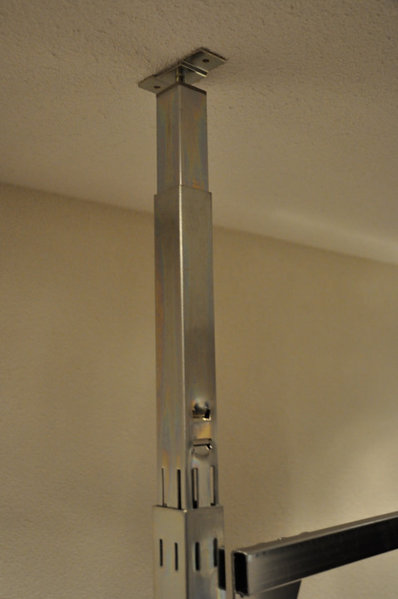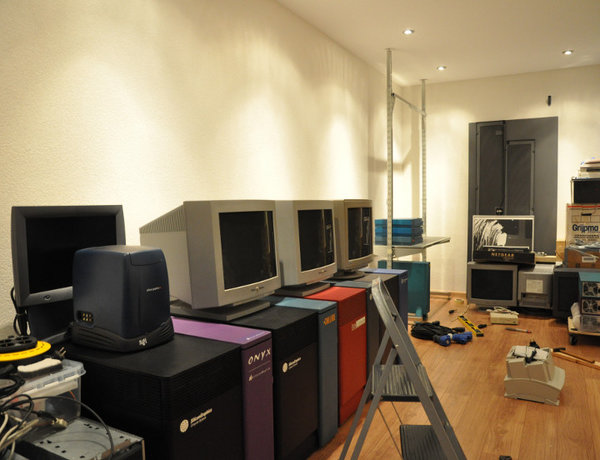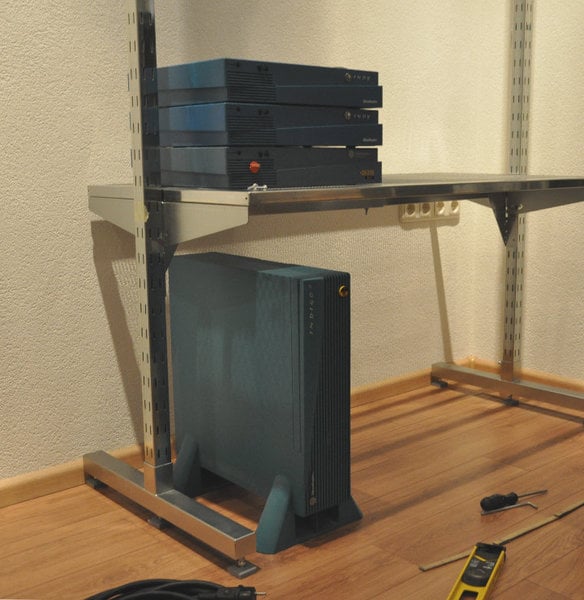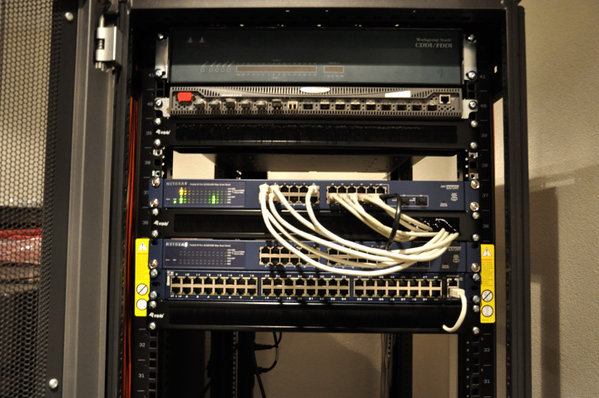Pontus wrote:
I've been eyeing the "broder" shelf system
Some things worth sharing about the Broder series. What I wanted from a shelving system was:
* Something that would last me a long time. So nothing with chip wood shelves for example.
* Not something with legs on all four sides because the back legs would rest on my cable gutter.
* Something 60cm deep. Most shelving systems are designed with archiving in mind and are 30 - 40cm deep.
* Something with a 'metallic', 'industrial' look to make the colors of the workstations stand out.
Enter the Broder series. That was ~ 1 year before I started construction of the annex and I didn't want to buy it back then because I didn't see the point of spending money on something, only to have to spend more to put it in storage for another year. Of course by the time I went to the Ikea to buy one they had stopped selling it.

A quick search on the internet will show that many people are unhappy about this, and second hand prices are close to or sometimes even higher than the new price. It sells quickly second hand, and due to the wide range of configurations chances of finding exactly what you need are not good. I started looking for alternatives but there aren't many. You quickly end up in shops selling store inventory and price tags are *not* hobbyist friendly...
In the end I found someone who was selling a large lot of Broder parts, and had more or less mislabeled them so they wouldn't show up in the searches. I bought the lot. My car (VW Passat Station) was packed front to back, and from the floor to the roof

I will eventually sell off the parts I don't need and hopefully reclaim some of the money I spent.
I'm using the 60x120cm grated shelves, and the 60cm 'T' legs. The legs (optionally!) came with adjustable, spring loaded extension to bolt them to the ceiling. I highly recommend these to keep the rack from tipping over.
-

-
Broder leg extensions
One thing I had not anticipated was that the tolerances of the parts are rather 'loose'. The extensions I mentioned will rattle if you shake the legs for example. I was afraid that a running computer system would cause nasty vibrations so I applied duck tape in the right places.
Another place where the tolerances are annoying is the brackets that attach the shelves to the legs:
-

-
Broder shelf attachment
-

-
Broder brackets
You can imagine that if the hooks are even slightly too far apart it will allow the bracket to 'rotate' on the vertical stand. A rotation of even 1 or 2 degrees will result in the shelf moving 1 cm up or down at the edge -- unacceptable. Judging by the tape remnants everywhere, the previous owner had struggled with this as well. Now I'm happy I've got this ridiculous amount of parts because I can select the best, and then, using hammer and pliers make them just right. I hope it will stay solid for years to come, but only time will tell...
Oh, and yes, one of the three feet of each 'T' leg is still resting on my cable gutter. I think the bulk of the weight is on the center foot and the outer feet are mostly for balance. But I've added some reinforcements inside the cable gutter anyway. What's more annoying is I can't open the gutter without removing the rack first. I will probably cut the lid of the gutter in a couple of places to be able to access the gutter under / behind the rack. That's why this is still not fully assembled, or bolted to the ceiling. I have to be absolutely sure before I cut the floor panels on the cable gutter ...


 (2x)
(2x)





 If I were you I'd feel scammed, because this is NOT a genuine V12. The part# clearly makes this a V10.
If I were you I'd feel scammed, because this is NOT a genuine V12. The part# clearly makes this a V10.


 Somebody with a working setup should be able to figure this out ...
Somebody with a working setup should be able to figure this out ...

 Let me try again:
Let me try again:






 I'll just have to make sure the thermal footprint of the larger systems doesn't trigger the alarm
I'll just have to make sure the thermal footprint of the larger systems doesn't trigger the alarm


